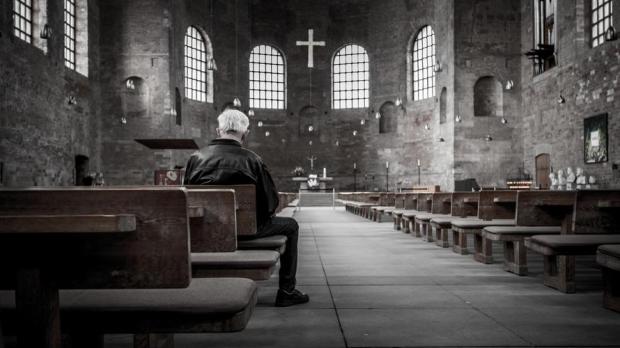As a priest at our parish put it Sunday in his announcements: “This year, the Assumption is a Holy Day, but because it’s a Monday, it’s not a Holy Day of Obligation.”
The United States bishops revised the rules in the early ’90s:
In accord with c. 1246, the National Conference of Catholic Bishops decrees that the holydays of obligation to be observed in the United States are the solemnity of Mary, the Mother of God; the solemnity of the Ascension; the solemnity of the Assumption; the solemnity of All Saints; the solemnity of the Immaculate Conception; the solemnity of Christmas. The solemnity of the Epiphany shall be transferred to the first Sunday following January 1st; the solemnity of Corpus Christi shall be observed on the second Sunday following Pentecost. When the solemnities of Mary, Mother of God, the Assumption, and All Saints fall on a Saturday or a Monday they will not be observed as holy days of obligation. (Emphasis added.)
Some people find that confusing and just wrong. Last year, when the feast fell on a Saturday (and thus was not an obligation) one commentatorobserved:
This sort of fiddling with the Calendar is a disservice to the faithful. It has the obvious effect of discouraging attendance at Mass and diminishes the significance of both the “demoted” feast days and the Roman Calendar in general. These “loopholes” form a small part of the broader message that many Catholics gleaned from the aftermath of Vatican II: We don’t have to do certain things anymore, so we won’t. …This August 15, most Catholics in the United States will skip Mass on the Feast of Our Lady’s Assumption. We have surely lost sight of what is fundamental. The notion that the Church can accomplish much of anything on this Earth without a vibrant Mystical Body that is consistently fed and nourished by the Bread of Life is pure folly. If the Sacrifice of the Mass is the “source and summit” of Christian life, it follows logically that the Church should do all in its power to ground the spiritual lives of the faithful in the Sacred Liturgy.
Well, I think that only looks at half of the story. The other half—from the perspective of the priest—puts it into a larger, sobering context. A recent story out of Ohio helps tell the tale, explaining what the shortage of priests is doing to the Church in Cleveland:
Parishioners may have a harder time conveniently scheduling priests for weddings, funerals and other sacraments. Priest may need to tend to more than one parish. Fr. Doug Koesel, pastor of Blessed Trinity Church on Cleveland’s West Side, said he and his colleagues see that coming. “Priests are going to be circuit riders,” he said. He worries that the impact on parishes could be harsh. “What’s going to happen to the schools and the buildings and the churches?” Koesel said. “In many ways, I think perhaps a structured parish life is not going to be viable in the 21st century. I don’t know if we can have parishes. Among my priest friends, we use the word ‘implode.’ Our current structures may need to implode before something new is born, a massive structural change in the way we look at being Catholic.” As time passes, churches might offer fewer Masses. Local churches have an average of 36 percent of capacity per Mass, compared to 44 percent nationwide. Already, St. Christopher in Rocky River, one of the region’s healthier and wealthier parishes, plans to reduce the number of Sunday services from four to three starting in June. The parish, where Oleksiak regularly fills in officiating Masses, plans to cut the 7 a.m. Sunday service and is seeking parishioner input on when the remaining Masses should be offered. In the future, many priests may serve multiple parishes, and few parishes will have priests other than their pastors.
This is already happening in many places—Ohio being one example where there is often just one priest per parish. And it gets worse when you travel into more rural areas. I remember hearing about the typical life of a priest in Montana last year: one priest often drives for hours on a Sunday to serve two or three parishes hundreds of miles apart.
The burden this places on priests is something most people in the pews don’t grasp (particularly in the parish-rich Northeast). But I think it is a significant reason why some holy days are “abrogated” in the United States when they fall before or after a Sunday.
Sure, a lot of us may be able to get to church. And we’d like to.
But that doesn’t mean that once we arrive there will be a priest to say the Mass.

